Working Lock and Key!

Click Photo For Information!
SOLD



Ditty Boxes were used by enlisted sailors and crew to store their most treasured personal possessions while at sea, as well as personal items needed on an everyday basis. Examples of these would be letters from family members, favorite photographs, other treasures found at various ports-of-call. Everyday needed items would be Forks, Spoons, Knives before the centralized mess, tobacco, smoking pipes, cups, razors, soap and tolietries, sewing kits.
Ditty Boxes were used by sailors for centuries they were not "regulation" per se; and were hand crafted by either the sailor himself or in most cases something which he purchased while on one of his voyages. It was only until the late 19th century where most navies of the world each began to standardize on a navy-issued regulation ditty box which met the needs and confines of each navy's particular shipboard configurarion and customs.
It is for the above reasons why we here at The Pirate's Lair honor, respect and treasure these ditty boxes as part of our collection since we understand that they and their contents were the most valuable things a sailor possessed while at sea traveling the world over and knowingly going into harms way! We also think that many of our clients may feel the same way and as such are making some available for purchase.

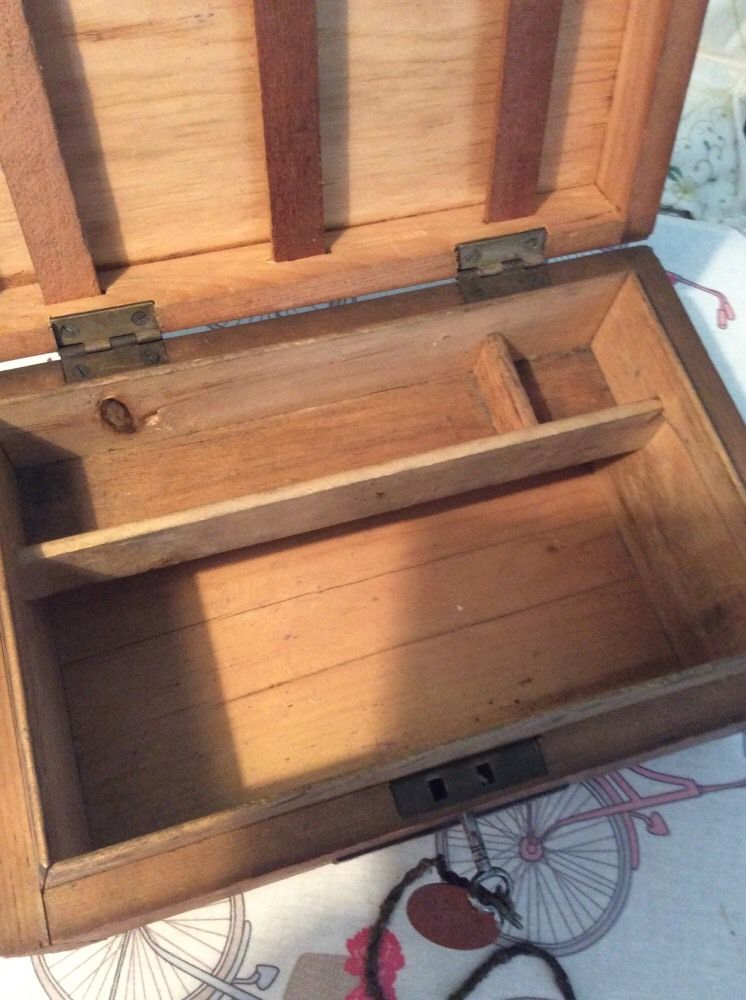
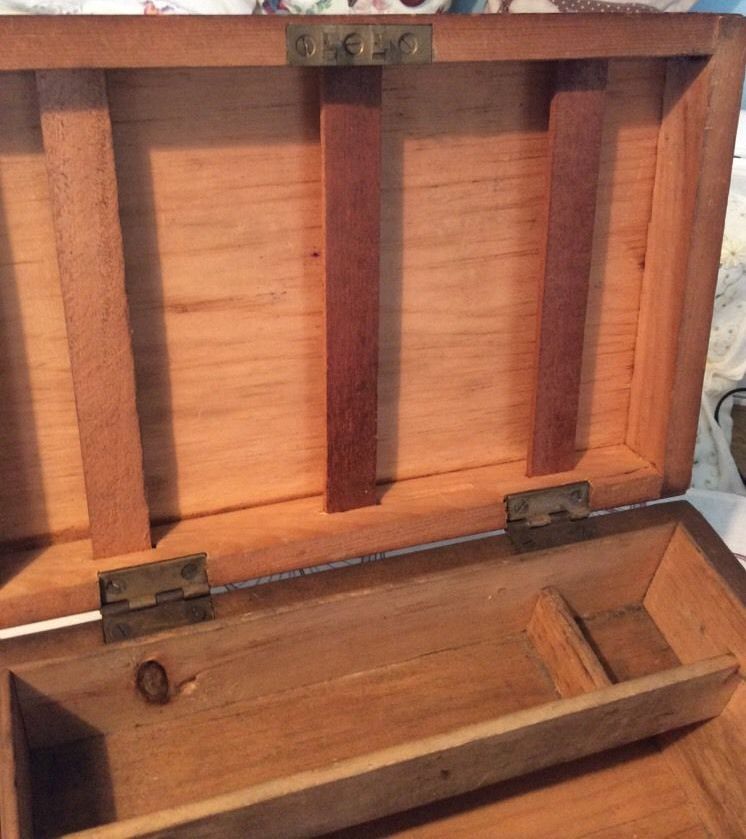
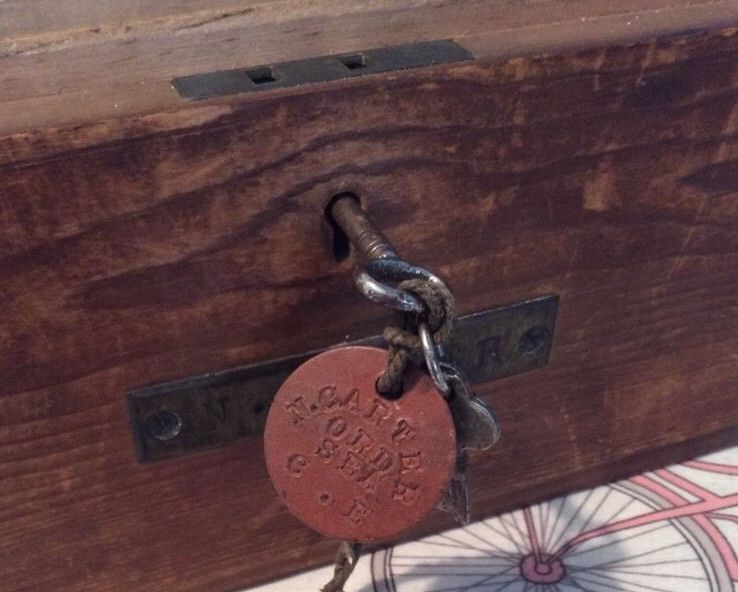
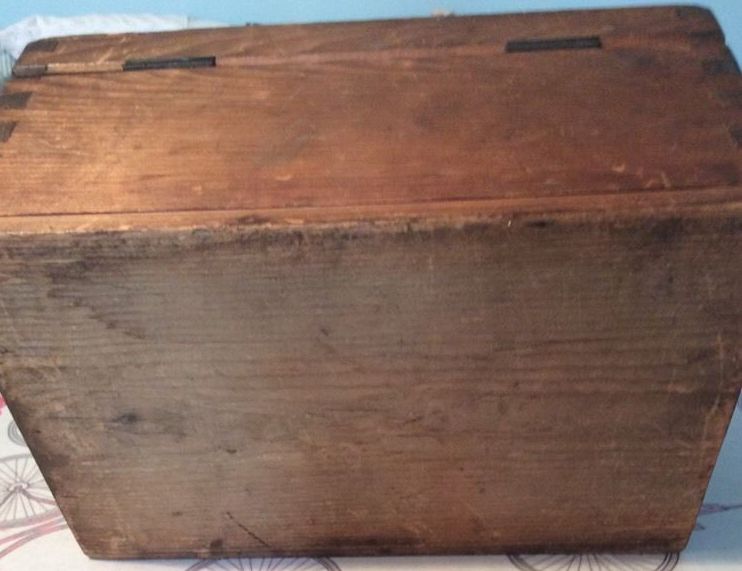
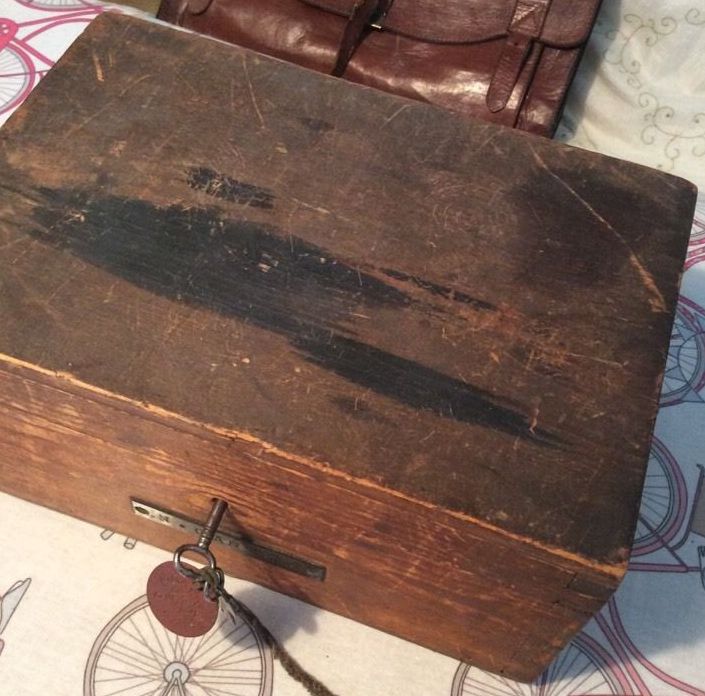

Above is a semi-handcrafted British Royal Navy standard issue regulation ditty box used by a British Navy Seaman named N. Carter (rank of Ordinary Seaman) as inscribed on the metal nameplate and on the metal key tag. The construction is of thick pine planks with dovetailed joints. This type/style of ditty box was commonly used by the British Navy throughout the 19th century but only became part of a seamans standard regulation issue at the onset of WWI. Note that this regulation ditty box did not have handles.
These British Royal Navy Regulation Ditty Boxes had wooden slats in the lid to hold letters, papers, and photographs. It had a built-in fixed tray for smalls such as pens, pencils, buttons, etc etc. And a fair amount of space to keep shoe polish and polishing cloths, tooth paste and brushes, and other personal articles.
Prior to WWI the British Navy never formally issued regulation ditty boxes to its sailors and relied upon the sailor himself to obtain one if he wished. It was in the sailors ditty box where he kept his flatware for meals, condiments, other items for his personal mess as well as the standard personal items and toiletries. Many sailors who couldn't afford nor had the rank for a ditty box and used whatever small canvas or cloth sack that they could find.
Note the simple with a shelf at the top rear which was common for most ditty boxes to easily retrieve and organize pens, pencils, tooth brushes, etc etc.
| Ditty Box #10 - British Royal Navy 1900s WWI-WWIIVintage WWI (poss WWII) British Royal Navy Standard Issue Regulation Ditty Box in Perfect Museum Quality Investment Grade Condition with All Compartments, Features and Key Intact and Working! Named: "N. Carter, Ordinary Seaman" Working Lock and Key! |
 Click Photo For Information! |
|
SOLD |
|
BELOW YOU WILL FIND PERIOD PHOTOGRAPHS SHOWING US NAVY AMERICAN SAILORS WITH DITTY BOXES, SEA CHESTS, OR SEA TRUNKS!
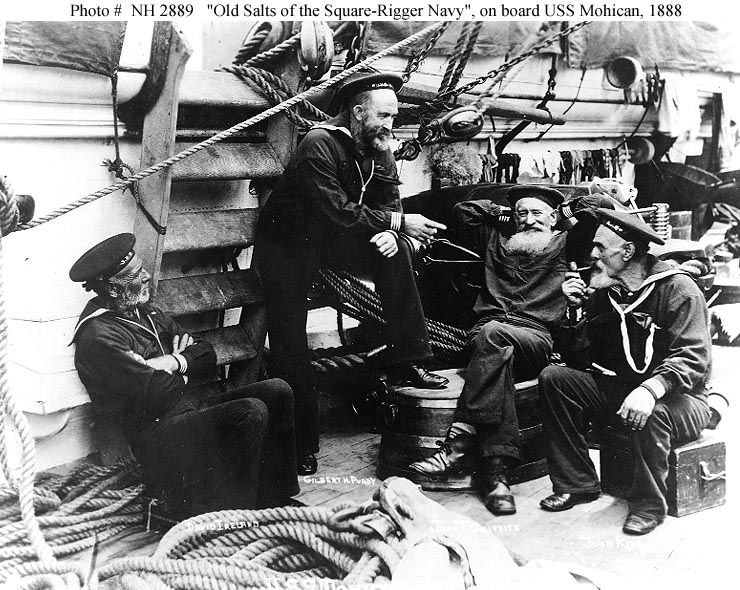
Period photograph aboard the USS Mohican ca 1880s, sailor John King sitting far right on his ditty box with other Old Salts spinning tales and yarns! Also note the sailor to the far left also sitting on a ditty box, the rope becket can be seen hanging down from the wooden handle. Sometimes these ditty boxes are also known as Sea Chests or Sea Trunks.

Above is a period photograph of US Navy American sailors aboard ship playing dice and card games passing the time away while sitting on their ditty boxes: ca 1890s Spanish American War to pre-WWI early 1900s Great White Fleet era. Sometimes these ditty boxes were also known as Sea Chests or Sea Trunks.
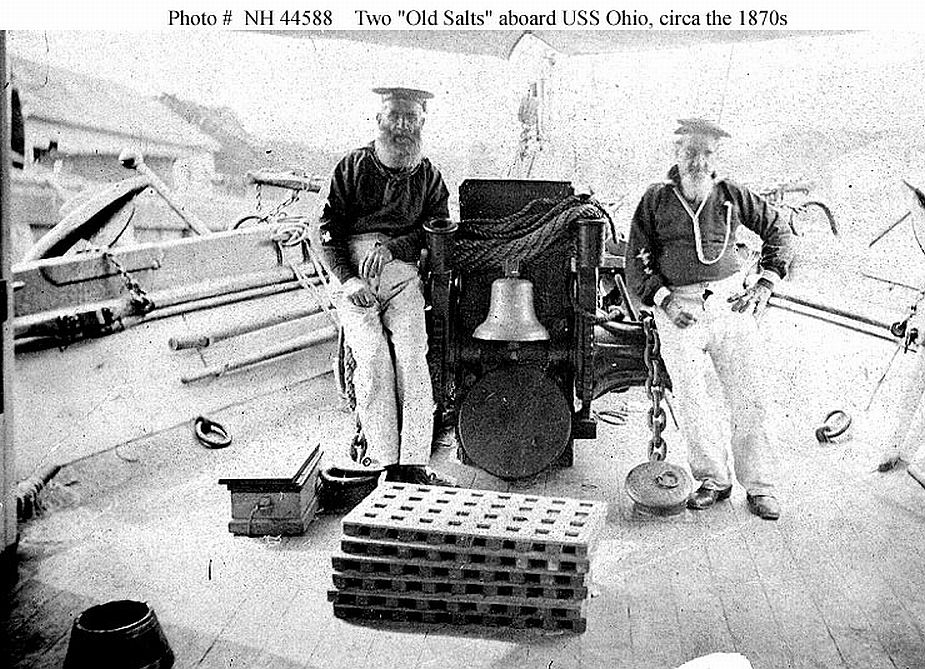
photograph of old salt sailors standing aboard ship on the bow of the USS Ohio ca 1870s note the ditty box (sea trunk/sea chest) on the deck in front of the sailor to the left. There is also an enlisted spitoon sittin on the deck in the lower left of the photo.
HISTORICAL NOTE: Ditty Boxes have been carried by sailors the world over from when ships first sailed. These small wooden boxes were where a sailor kept personal articles such as sewing kits, small carving knives, razors and toiletries, items picked up in foreign ports, and later photographs.
Due to shipboard space constraints all ditty boxes were relatively small so that they could be easily stored typically where a sailor slept. Some ditty boxes were handmade with fantastic nautical carvings while others later in history were standard issue equipment for uniformity and given to each enlisted sailor for his own use where it was expected he would keep required personal items and needed toiletries.
The simple construction of a ditty box was typically of pine wood with dovetailed joints, hinged lid with lock and key, while in the case of the early German Navy the lid consisted of a sliding piece of wood which fitted into grooves. Some ditty boxes had handles made for rope beckets while many didnt have handles at all. Some had specific plates where the sailors name was to be engraved, while others did not - especially early handmade ditty boxes.
We will be illustrating on this web page specific ditty boxes found in our collection as well as period photographs showing sailors with their ditty boxes!
The Pirate's Lair has been collecting Ditty Boxes for several years as each one is unique and personal to the sailor who owned it and as such are important pieces of naval history used during time of war. However we are pleased to offer some of the ditty boxes we have found for the pleasure and use of people who appreciate and enjoy the unusual, hard-to-find nautical and naval antiques.
| Custom Designed, Handcrafted, and Hand Lettered in Caligraphy on your Antique Chest |
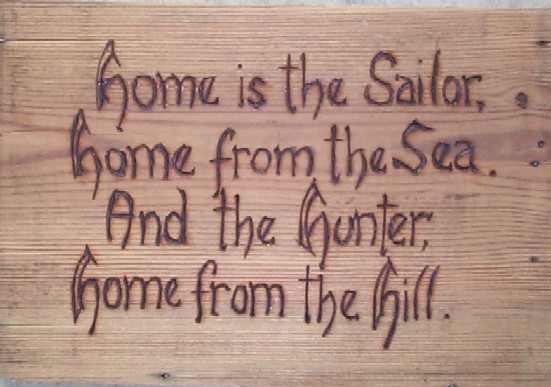 Click Here To Review Sample Engravings |
|
| Customer Photographic Examples of our Antique Trunks Being used as a Military or Naval Retirement Shadow Box and Storage Chest!! |
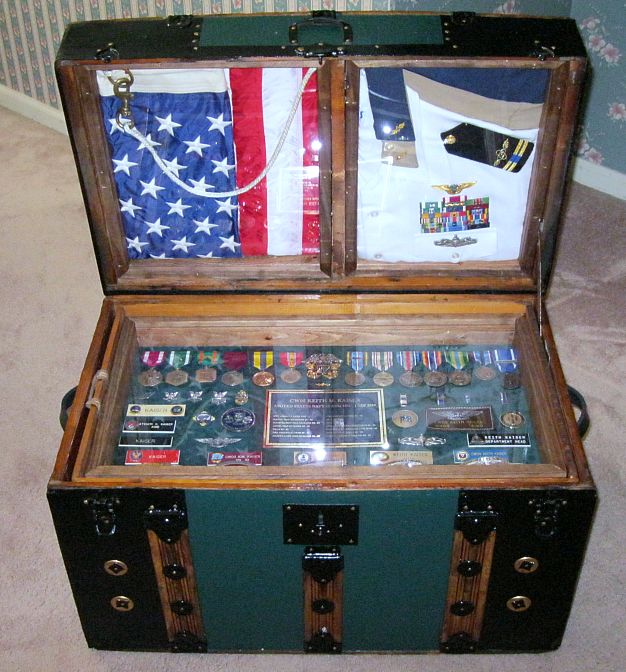 Click Here for Sample Shadow Box Photographs From Customers |
|